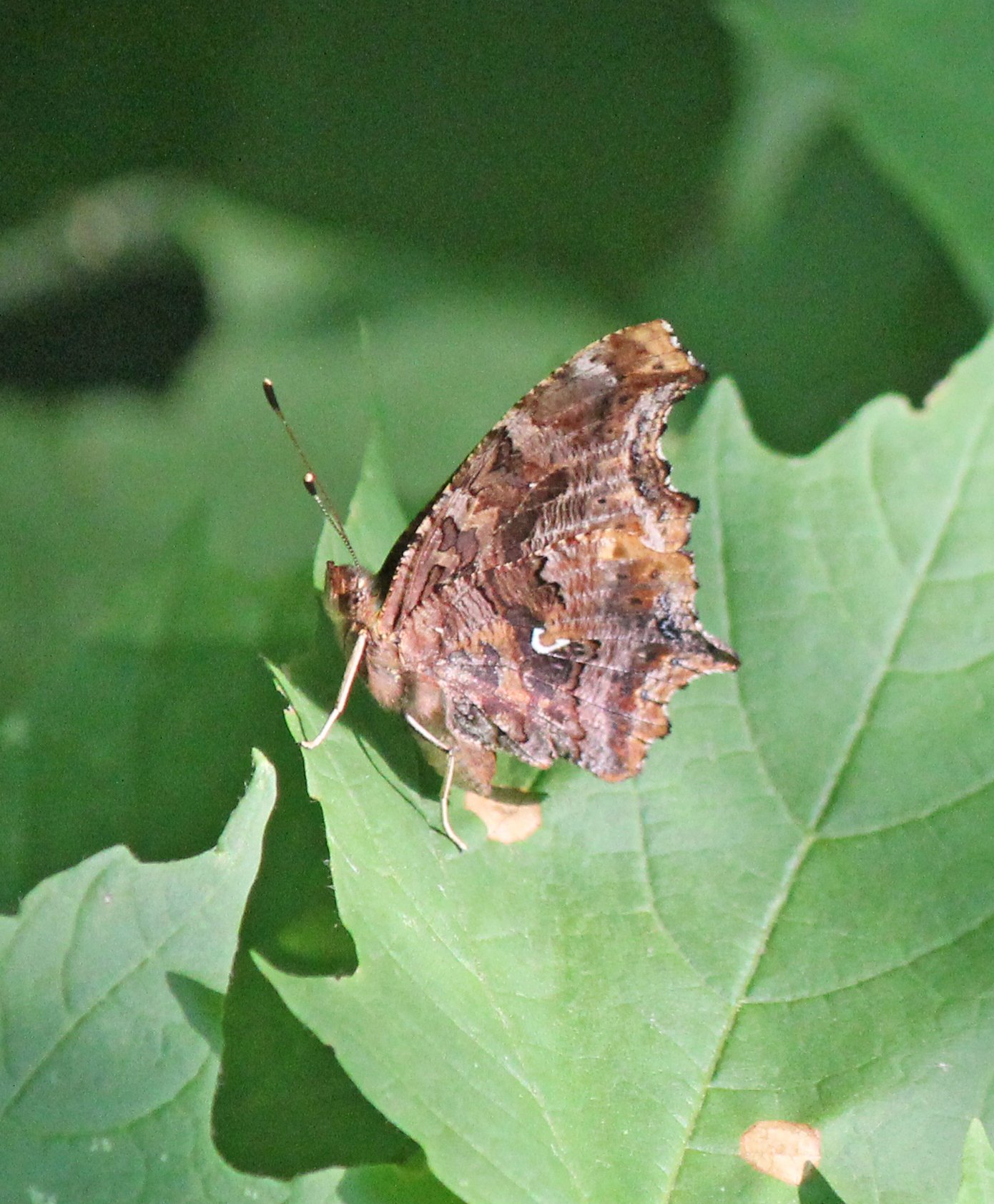Wildlife Watching Wednesday: The Stunning Comma Butterfly
By: Tom Berg
Many butterflies are beautiful, but some are truly breath-taking. For me, the Comma butterfly is one of those stunningly beautiful, breath-taking butterflies. The bright orange coloring on their scalloped wings is hard to forget, and the dark spots and splotches help them blend in with their surroundings when they land on the forest floor to feed on fallen fruit.
Of course, the most famous pattern on their wings can be found on the drab brown underside of their back wings – it is a silver or white “comma” shape, hence the name of this butterfly. Comma butterflies look very similar to the Question Mark butterfly, which has a silver or white “question mark” shape on the underside of their back wings. When both of these butterflies close their wings, they look like a dead leaf.
Although adult comma butterflies sometimes feed on the nectar from a variety of flowers, they actually prefer the fluids from decaying fruit like plums, apples and raspberries (just to name a few). They also like to feed on tree sap seeping out of wounds on trees caused by woodpeckers. You might be able to attract comma butterflies to your yard or garden by setting out overripe apples, bananas and plums.
The white comma on the back of the comma butterfly’s wings.
Comma butterflies typically lay their eggs on the leaves of stinging nettle and on the leaves of elm and willow trees. Their caterpillars seem to prefer these host plants over all others. After the eggs hatch, the caterpillars grow quickly. They are brown and white, and actually resemble bird droppings. This is one of their strategies for avoiding birds, which are a major predator of all kinds of caterpillars.
During the winter, many adult comma butterflies hibernate instead of dying like some species of insects. The adults find a hollow tree or a thick pile of leaves in the forest where they can get out of the wind and weather and hibernate. When the first warm days of spring arrive, they will emerge and start looking for a mate to start the cycle over again.
Have you had a great outdoor experience? Join Global Outdoors and write a review to tell everyone about it! We’re building the home for trusted reviews of outdoor experiences, outfitters, and guides.



